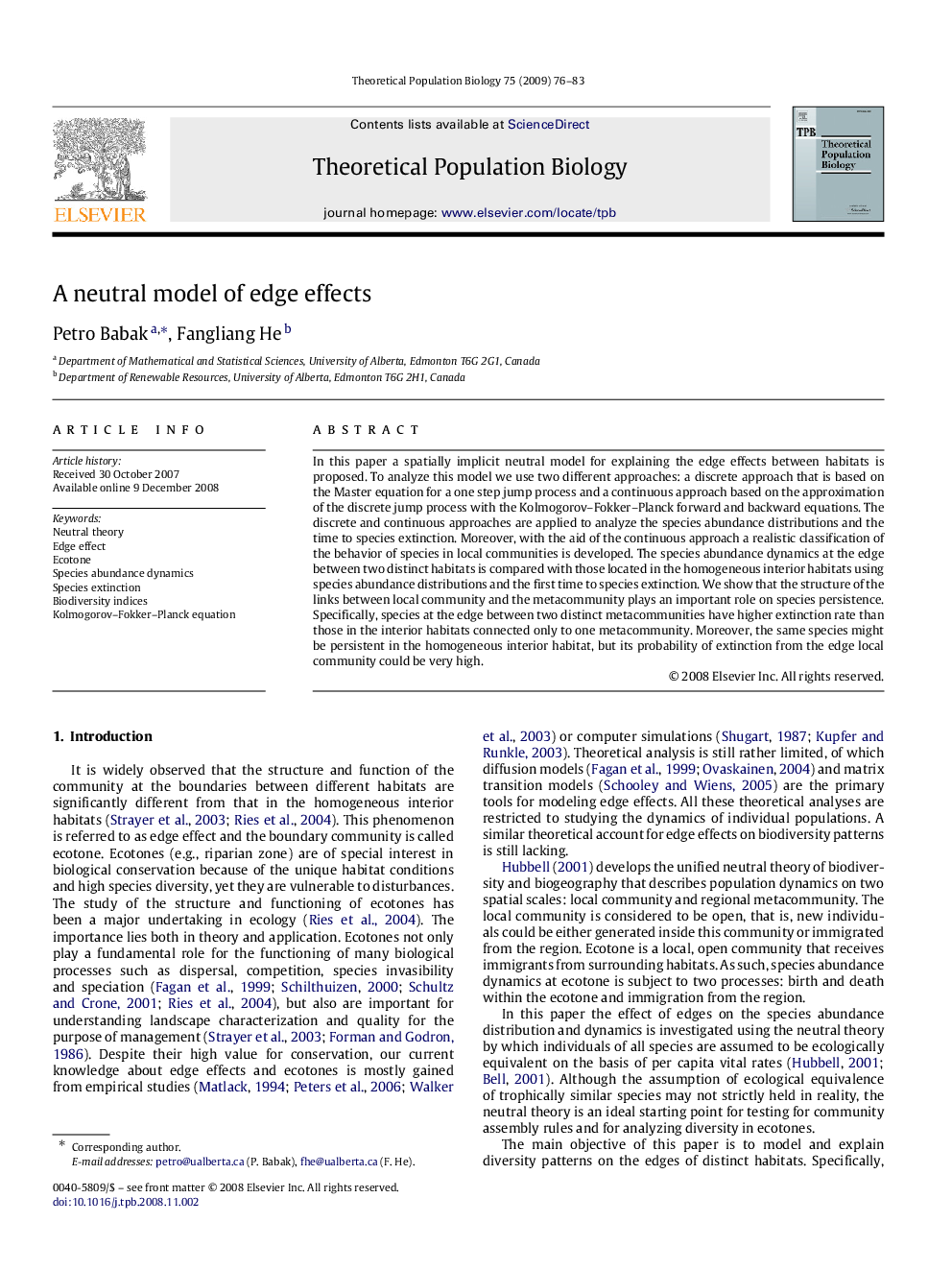| Article ID | Journal | Published Year | Pages | File Type |
|---|---|---|---|---|
| 4502823 | Theoretical Population Biology | 2009 | 8 Pages |
In this paper a spatially implicit neutral model for explaining the edge effects between habitats is proposed. To analyze this model we use two different approaches: a discrete approach that is based on the Master equation for a one step jump process and a continuous approach based on the approximation of the discrete jump process with the Kolmogorov–Fokker–Planck forward and backward equations. The discrete and continuous approaches are applied to analyze the species abundance distributions and the time to species extinction. Moreover, with the aid of the continuous approach a realistic classification of the behavior of species in local communities is developed. The species abundance dynamics at the edge between two distinct habitats is compared with those located in the homogeneous interior habitats using species abundance distributions and the first time to species extinction. We show that the structure of the links between local community and the metacommunity plays an important role on species persistence. Specifically, species at the edge between two distinct metacommunities have higher extinction rate than those in the interior habitats connected only to one metacommunity. Moreover, the same species might be persistent in the homogeneous interior habitat, but its probability of extinction from the edge local community could be very high.
